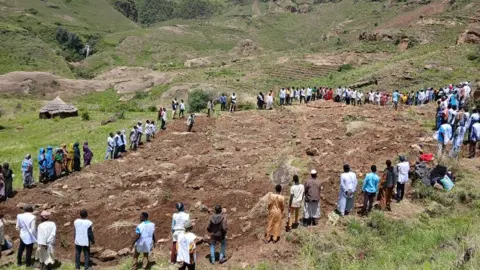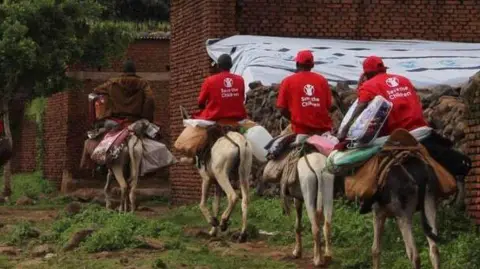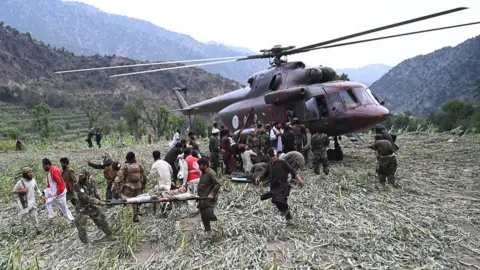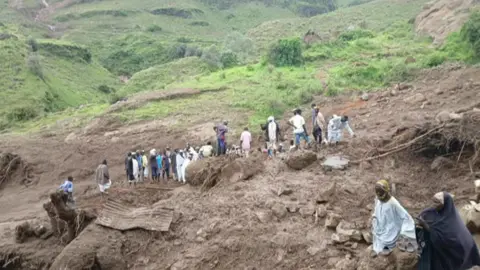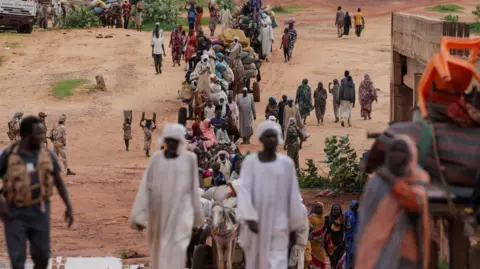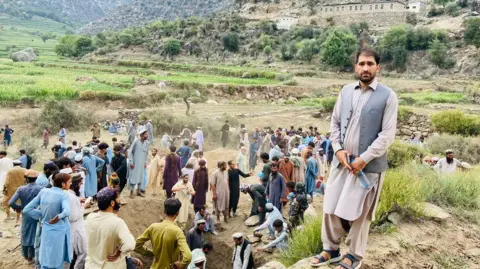On Wednesday, a vast glacier in the Swiss Alps fractured, triggering a powerful landslide that buried the small village of Blatten under a deluge of ice, mud, and rocks. This catastrophic event occurred just nine days after local authorities had evacuated the village's entire population of around 300 residents, aimed at safeguarding them against potential disaster.
The Birch Glacier's collapse resulted in massive debris covering about 90 percent of the village, with at least one person reported missing. Matthias Ebener, a spokesperson for the regional crisis management team, confirmed the harrowing news while officials from the Valais Canton assessed the extensive destruction.
Drone footage showcased the glacier’s sudden rupture, sending a thick cloud of dust cascading down the mountainside. According to a government engineer, the glacier had been shifting towards the valley at an alarming rate of eight to eleven feet per day prior to the disaster.
During a press conference on Wednesday, Mayor Matthias Bellwald expressed his sorrow, stating, “We’ve lost the village, but not the heart.” He acknowledged the daunting task ahead: recovery efforts could stretch over several years. Valais state councilor Stéphane Ganzer further reported that approximately 90 percent of Blatten was completely buried under the landslide.
Swiss President Karin Keller-Sutter shared her condolences on social media, reflecting on the tragedy of losing one’s home and indicating her thoughts were with the resilient residents of Blatten. In the wake of the landslide—which registered a magnitude of 3.1 on the earthquake scale—officials cautioned about potential flooding due to debris blocking the nearby riverbed.
Current measures involve local leaders requesting military support in the form of pumps and debris removal equipment to mitigate the risk of flooding, with the main road linking Blatten to Goppenstein remaining closed to all but residents.
For the past two weeks, the community had lived in the shadow of the glacier, facing constant threats of landslides. Consequently, scores of livestock were evacuated, with images of a helicopter airlifting an injured cow capturing widespread attention online. This rescue operation was a familiar sight for Alps farmers faced with precarious conditions.
Blatten’s tragedy recalls a similar incident in 2023 when the village of Brienz narrowly escaped destruction from a landslide, prompting evacuation orders for its residents. As Switzerland grapples with climate-induced changes impacting its glaciers, communities like Blatten are left to confront the aftermath of nature’s fury and the long road to recovery.
The Birch Glacier's collapse resulted in massive debris covering about 90 percent of the village, with at least one person reported missing. Matthias Ebener, a spokesperson for the regional crisis management team, confirmed the harrowing news while officials from the Valais Canton assessed the extensive destruction.
Drone footage showcased the glacier’s sudden rupture, sending a thick cloud of dust cascading down the mountainside. According to a government engineer, the glacier had been shifting towards the valley at an alarming rate of eight to eleven feet per day prior to the disaster.
During a press conference on Wednesday, Mayor Matthias Bellwald expressed his sorrow, stating, “We’ve lost the village, but not the heart.” He acknowledged the daunting task ahead: recovery efforts could stretch over several years. Valais state councilor Stéphane Ganzer further reported that approximately 90 percent of Blatten was completely buried under the landslide.
Swiss President Karin Keller-Sutter shared her condolences on social media, reflecting on the tragedy of losing one’s home and indicating her thoughts were with the resilient residents of Blatten. In the wake of the landslide—which registered a magnitude of 3.1 on the earthquake scale—officials cautioned about potential flooding due to debris blocking the nearby riverbed.
Current measures involve local leaders requesting military support in the form of pumps and debris removal equipment to mitigate the risk of flooding, with the main road linking Blatten to Goppenstein remaining closed to all but residents.
For the past two weeks, the community had lived in the shadow of the glacier, facing constant threats of landslides. Consequently, scores of livestock were evacuated, with images of a helicopter airlifting an injured cow capturing widespread attention online. This rescue operation was a familiar sight for Alps farmers faced with precarious conditions.
Blatten’s tragedy recalls a similar incident in 2023 when the village of Brienz narrowly escaped destruction from a landslide, prompting evacuation orders for its residents. As Switzerland grapples with climate-induced changes impacting its glaciers, communities like Blatten are left to confront the aftermath of nature’s fury and the long road to recovery.










